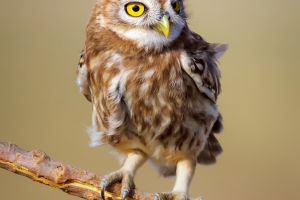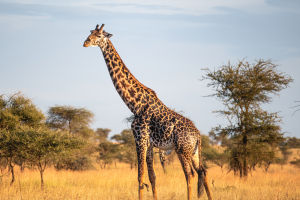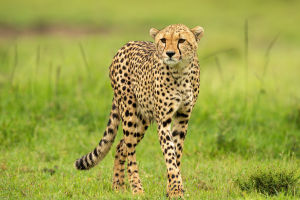The Common Buzzard, with its powerful wings and sharp talons, is a bird of prey that commands attention. Found across Europe and parts of Asia, this raptor is a symbol of strength and survival.
Whether you’re a bird enthusiast or simply curious about the wildlife around you, the Common Buzzard is a fascinating creature worth exploring.
What Makes this Bird Unique?
Appearance and Size: The Common Buzzard is a medium-to-large bird of prey, with a wingspan ranging from 110 to 130 cm (43 to 51 inches). Its plumage varies widely, from dark brown to almost white, but most buzzards sport a mix of brown and white feathers, with a characteristic banded tail. This variability in color often leads to confusion with other raptors, but the buzzard’s broad wings and rounded tail are key identifying features.
Behavior and Hunting Skills: It is a masterful hunter, using its keen eyesight to spot prey from high in the sky. It primarily feeds on small mammals like voles, rabbits, and mice, but its diet can also include birds, reptiles, and even carrion. Buzzards are known for their patient hunting style, often seen soaring in circles or perched high on trees, scanning the ground for movement. When it spots prey, the buzzard swoops down with incredible speed and precision, capturing its target with sharp talons.
Vocalization: This predator is also known for its distinctive call—a loud, mewing sound that can be heard over long distances. This call is often heard during flight or when the bird is communicating with its mate or young. It’s a sound that, once heard, is hard to forget, adding to the buzzard’s presence in the wild.
Habitat and Distribution
Range: It has an extensive range, found throughout Europe, parts of Asia, and North Africa. It is one of the most widespread raptors, adapting to various habitats, from woodlands and farmlands to mountainous regions and coastal areas. Its adaptability is a key factor in its success as a species.
Nesting: Buzzards typically build their nests high in trees, often reusing the same nest year after year. These nests are large and constructed from sticks and twigs, lined with softer materials like leaves and moss. The female usually lays 2-4 eggs, which both parents incubate. After hatching, the chicks are fed by both parents until they are ready to fledge and explore the world on their own.
The Role of the Common Buzzard in the Ecosystem
Predator and Scavenger: As both a predator and scavenger, the Common Buzzard plays a crucial role in maintaining the balance of its ecosystem. By controlling populations of small mammals and consuming carrion, buzzards help prevent the spread of disease and keep the environment healthy. Their presence is a sign of a well-functioning ecosystem, and their absence can indicate ecological imbalance.
Indicator Species: They are often considered an indicator species, meaning their health reflects the overall health of their environment. A thriving buzzard population suggests a robust and diverse ecosystem, while a declining population can signal habitat loss, pollution, or other environmental issues.
Conservation Status and Threats
Current Status: It is currently listed as "Least Concern" by the International Union for Conservation of Nature (IUCN), meaning it is not considered at immediate risk of extinction. However, like all wildlife, buzzards face threats from habitat destruction, illegal hunting, and poisoning from pesticides. Conservation efforts are crucial to ensuring that buzzard populations remain stable and continue to thrive.
Human Impact: Habitat loss due to agriculture and urbanization is one of the biggest threats to the Common Buzzard. Additionally, illegal hunting and poisoning, either directly or indirectly through contaminated prey, pose significant dangers. Conservation programs that protect natural habitats and reduce human-wildlife conflicts are essential for the buzzard’s survival.
Observing the Common Buzzard
For birdwatchers and nature enthusiasts, observing a Common Buzzard in the wild is a thrilling experience. These birds are often seen soaring high in the sky, riding thermals with effortless grace. To spot a buzzard, head to open countryside or forested areas where they are known to hunt. Early morning or late afternoon are the best times to see them in action.
If you’re lucky enough to witness a buzzard hunting or hear its distinctive call, you’ll understand why these birds are so revered. Their strength, adaptability, and role in the ecosystem make them a vital part of the natural world.
The Common Buzzard is more than just a bird of prey—it’s a symbol of nature’s power and resilience. Whether you’re fascinated by its hunting prowess, intrigued by its role in the environment, or simply enjoy watching it soar, the buzzard offers a glimpse into the beauty and complexity of the natural world. As we continue to appreciate and protect these magnificent birds, we ensure that they remain a part of our world for generations to come.
Things you need to know about BUZZARDS!
Video By A Shot Of Wildlife


